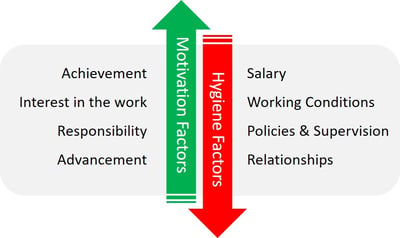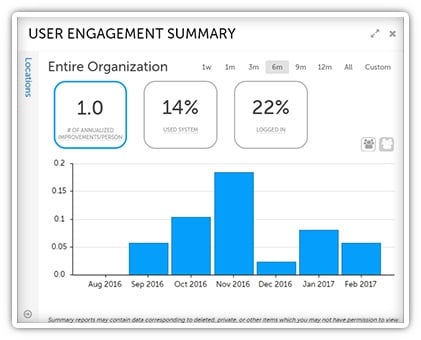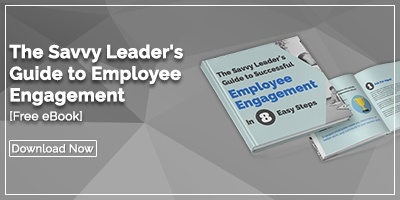 It is relatively common for people to use the terms "employee engagement" and "employee satisfaction" interchangeably. However, we have never been comfortable with that framing, especially when it comes to software to measure and improve engagement. Tools like employee NPS and employee pulse surveys do an excellent job of measuring employee satisfaction, but they don't have features likely to increase employee engagement. Understanding the difference can help organizations that want to attract, retain, and develop talent find the tools that can help them do so.
It is relatively common for people to use the terms "employee engagement" and "employee satisfaction" interchangeably. However, we have never been comfortable with that framing, especially when it comes to software to measure and improve engagement. Tools like employee NPS and employee pulse surveys do an excellent job of measuring employee satisfaction, but they don't have features likely to increase employee engagement. Understanding the difference can help organizations that want to attract, retain, and develop talent find the tools that can help them do so.
Herzberg’s Motivation-Hygiene Theory
American psychologist Fredrick Herzberg conducted hundreds of employee interviews in 1964 to test his hypothesis that the factors that motivated employees were different from those that dissatisfied them. In other words, he believed that employee satisfaction and motivation were not on a continuum. Making employees less dissatisfied did not necessarily make them more motivated.
He asked the employees essentially two sets of questions:
- Think of a time when you felt especially good about your job. Why did you feel that way?
- Think of a time when you felt especially bad about your job. Why did you feel that way?
Herzberg's research validated the idea that employees are influenced by both motivation factors (achievement, intrinsic interest in the work, responsibility, and advancement) as well as hygiene factors (company policy, administrative practices, supervision, relationships, working conditions, and salary). The result of this research is the motivation-hygiene theory or "two-factor theory."
Hygiene Factors (Risk)
Hygiene factors represent a risk for employers. They are strongly associated with employee retention and negative online reviews. If they are not met, employees quickly become dissatisfied and leave at the first chance. They form the floor for employee engagement. However, improving them beyond a certain point will not lead to increased employee motivation. They exist at the same time as motivating factors but do not influence them.
Employers often mistakenly believe that employees are motivated by money above all else, but note that salary is a hygiene factor, not a motivating one. Salary alone does not lead to motivation. Employees want to be paid fairly, for sure, but compensation can not overcome poor working conditions, difficult relationships, or unfair administrative practices.
Hygiene factors remind me of what Peter Gibbons said in Office Space, "But you know, Bob, that will only make someone work just hard enough not to get fired."
Motivation Factors (Reward)
Motivation factors are what determines how effectively a person performs at work. When employees are motivated, they extend discretionary effort and become emotionally invested in the success of the organization. It is possible for an employee to be highly motivated but also dissatisfied. In fact, the theory holds that there are four possible combinations:
High Hygiene with High Motivation: This is the perfect recipe for employee retention and engagement.
High Hygiene and Low Motivation: This is a widespread situation in which employees are not complaining, but they are only doing what is necessary to keep their job.
Low Hygiene and High Motivation: This is the most frustrating situation for employees. They are challenged and want to engage, but baseline work conditions are not good enough. If the work environment is sub-par, no amount of motivation will overcome the self-preservation instinct to find another job.
Low Hygiene and Low Motivation: This is the worst-case scenario in which employee turnover and job dissatisfaction can be expected to be rampant.
How Employee Engagement Software Supports the Motivation Factors
Hygiene factors are reasonably easy to manage and change. Leaders can manipulate company policy, administrative practices, working conditions, and salaries to meet the minimum standard for satisfaction. Working relationships are more challenging, but that's probably why they are the target of standard employee satisfaction programs like company outings, team-building events, appreciation programs, and the like.
Making headway on motivation factors is much more difficult, but employee engagement software can help if applied purposefully. If you already have a solution or are in the market for one, think about how it can help with each of these motivation factors.
 Achievement
Achievement
Employees feel motivated when they are successful in accomplishing their goals. Your employee engagement solution should support many small "wins" that help people want to keep doing more. That's why a solution centered on daily incremental improvement and job enrichment is so valuable. Achievement becomes an expected result of everyday activity.
Intrinsic Interest in the Work
On a large scale, this means that people need to care generally about the work they do and the mission of the organization, but it can be applied at the micro-level as well. Letting employees decide which projects to undertake and offer their own innovative ideas increases interest in the work. People will invest emotionally in ideas that are their own.
Responsibility
One of the significant advantages of a bottom-up approach to employee engagement is that it puts the responsibility for finding the best ways to get involved in the employee's hands. It's up to them to take accountability for the processes they operate and find ways to make them better.
Advancement
In some cases, a career path for each role is clear. In others, the employee's journey will be less conscripted. Either way, a pre-curser to advancement is recognition. Even if employees don't get a promotion every time they step up to implement positive change, the simple, public achievement recognition of their efforts goes a long way toward increasing motivation.

Next time you think about employee engagement and the tools to support it, make sure that enough weight is given to the motivation factors because you don't want a bunch of employees who are working only hard enough not to get fired.

![[WEBINAR] Bottom-Up Improvement Software Demo](https://no-cache.hubspot.com/cta/default/326641/8545f357-84e1-47b2-81e0-f4fa0d3cd893.png)


Add a Comment